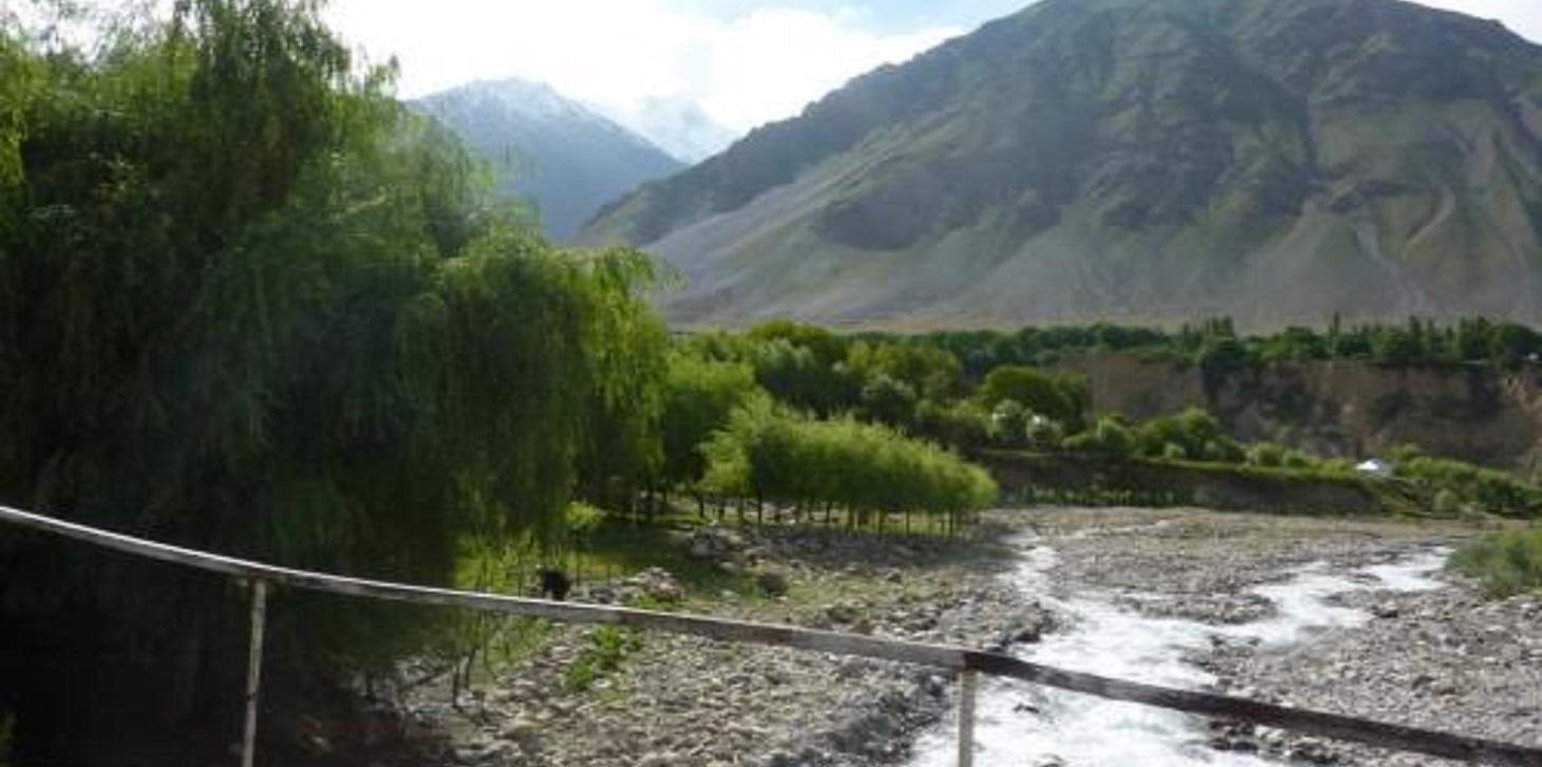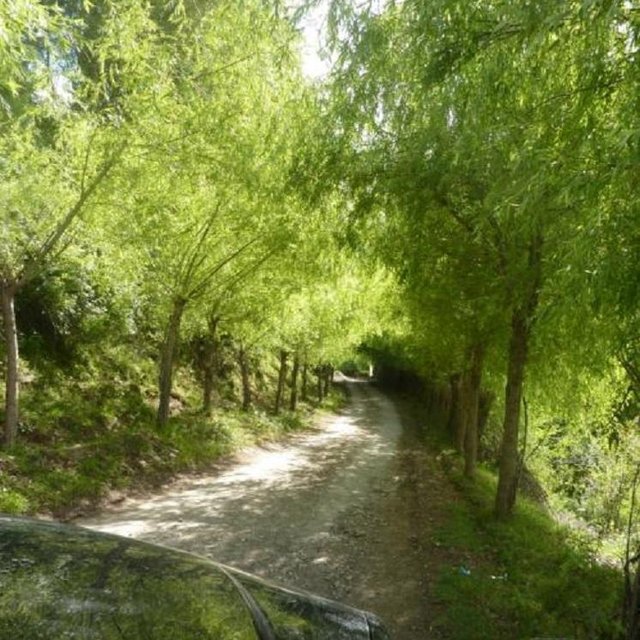



This technology is easy to implement: seedlings (2-3 years old willows’ branches) are planted along both sides of the roads (along the very narrow earth lines), as well as in the very stony floodplains or along the small canals in Vanch rayon. They can be planted in several rows or as a group and needs small, not deep and narrow irrigation canals. Electricity is provided only for couple of hours per day, which is not enough to prepare food and to heat houses during the cold months (4-5 months). People do not have enough money to buy gas and coal. Mainly kizak and tree branches are used and petrol is used for lighting (which not also not cheap). This condition forced people to cut down trees in the area (especially floodplain forest) within the last 18 years. All arable lands in the village are occupied. 74 years old retired Narzulloev Daut is physically incapable to go far away in search for wood, therefore, he decided to “produce” wood not far from his house. He planted trees along the roads and in the stony floodplains of the small river. He has been doing it for 10-15 years and continues planting additional seedlings every year. This technology reduces pressure to environment.
Planting willow trees to ensure cheep woods for households for cooking, backing bread (2-3 times per week), heating and other purposes
Seedlings are prepared by farmers for free. 3-4 years old willow-trees’ branches are cut (2-2.5 m) and after cutting tops of them, they are planted into mist soil along the narrow, not deep irrigation canals. Manure is placed into the planting holes. At the beginning it needs every day watering, after some time, every second day. Next year ones a week watering is sufficient. Irrigation is also not difficult: river water flows first through the main canal irrigating trees planted along the roads then further to all trees in the floodplain. Seedlings grow fast, their trunks surrounded by branches or fenced with thorns to protect them from goats. Planting willow-trees along the roads allow to reduce air pollution by exhaust gases (CO2 is absorbed during photosynthesis). Willow trees planted in the floodplain, protects the soil. At the same time this technology does not interfere with other technologies (do not make shade) connected with gardening or using arable lands. Moreover, already after 4-5 years, farmers consistently provided with firewood.
Chihoh and Ravgad villages, Teharv district, Vanch region. 86% of the region’s territory is not suitable either as arable land or pasture land. There is no available land to plant trees and leshoz does not allow cutting down its trees. Electricity is provided only for couple of hours. Lezshoz in Vanch is incapable to provide the villages with wood. Each your leshoz must prepare 200m3 od ire wood for schools and hospitals and can sell only 400m3 wood to villagers in the autumn. Families receive wood, branches for goats in spring when there is very few fodder available. Rods, diameters of which are up to 1sm, are used for weaving baskets, which are necessary in the household. They are also used as a construction material or to fence the gardens. Obtaining cheap wood quickly: Many farmers are interested in implementing this technology because of its cheapness and easiness. Willow requires a lot of water, but other than that there are few work needs to be done.
Location: GBAO, Vanch, Chihoh, Tajikistan, Tajikistan
No. of Technology sites analysed:
Spread of the Technology: evenly spread over an area (approx. < 0.1 km2 (10 ha))
In a permanently protected area?:
Date of implementation:
Type of introduction






